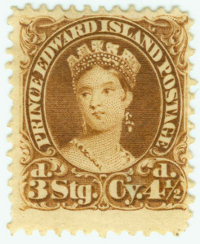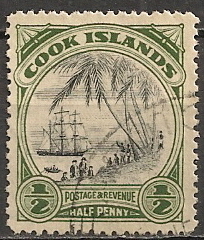
Discussion - Member to Member Sales - Research Center

Discussion - Member to Member Sales - Research Center

Regards ... Tim.


Login to Like
this post
The intersecting straight edges would make it a stamp from the lower right corner of a booklet pane or possibly from the lower right corner of the upper left pane of 100 stamps cut from a sheet of 400 stamps. The Scott specialized U.S. catalogue has useful diagrams showing the layout of sheets, panes, and booklets.
Coil stamps normally have parallel straight edges. Some countries use strips of stamps torn from regular sheets to create coils, so those stamps are perforated on all four sides and can be difficult to differentiate from regular stamps. And that's the extent of my knowledge about this topic!
Bob

Login to Like
this post
Tim, all US coil stamps of the period would have, as Bob said, parallel straight lines. The WFs are notoriously difficult to ID (at least for me) depending as they do on printing paper (wet, dry), WMK, perfs, dies, etc.

Login to Like
this post
It's 331 or 374. As Bob pointed out, it's either the bottom right corner of a pane (331 or 374) or the bottom right corner of a booklet (331a or 374a). 331 is double line WMK. 374 is single line wmk. I use this spreadsheet I created several years ago to sort out the 3rd Bureau:
http://www.larsdog.com/stamps/note3B.htm
Lars

Login to Like
this post

Auctions - Approvals
Is the Franklin on this card a Scott 331 from perhaps a stamp book, or is it a 348 or 352 coil?
Regards ... Tim.


Login to Like
this post

re: Clarks Grove, MN 1910
The intersecting straight edges would make it a stamp from the lower right corner of a booklet pane or possibly from the lower right corner of the upper left pane of 100 stamps cut from a sheet of 400 stamps. The Scott specialized U.S. catalogue has useful diagrams showing the layout of sheets, panes, and booklets.
Coil stamps normally have parallel straight edges. Some countries use strips of stamps torn from regular sheets to create coils, so those stamps are perforated on all four sides and can be difficult to differentiate from regular stamps. And that's the extent of my knowledge about this topic!
Bob

Login to Like
this post
Auctions
re: Clarks Grove, MN 1910
Tim, all US coil stamps of the period would have, as Bob said, parallel straight lines. The WFs are notoriously difficult to ID (at least for me) depending as they do on printing paper (wet, dry), WMK, perfs, dies, etc.

Login to Like
this post

re: Clarks Grove, MN 1910
It's 331 or 374. As Bob pointed out, it's either the bottom right corner of a pane (331 or 374) or the bottom right corner of a booklet (331a or 374a). 331 is double line WMK. 374 is single line wmk. I use this spreadsheet I created several years ago to sort out the 3rd Bureau:
http://www.larsdog.com/stamps/note3B.htm
Lars

Login to Like
this post

